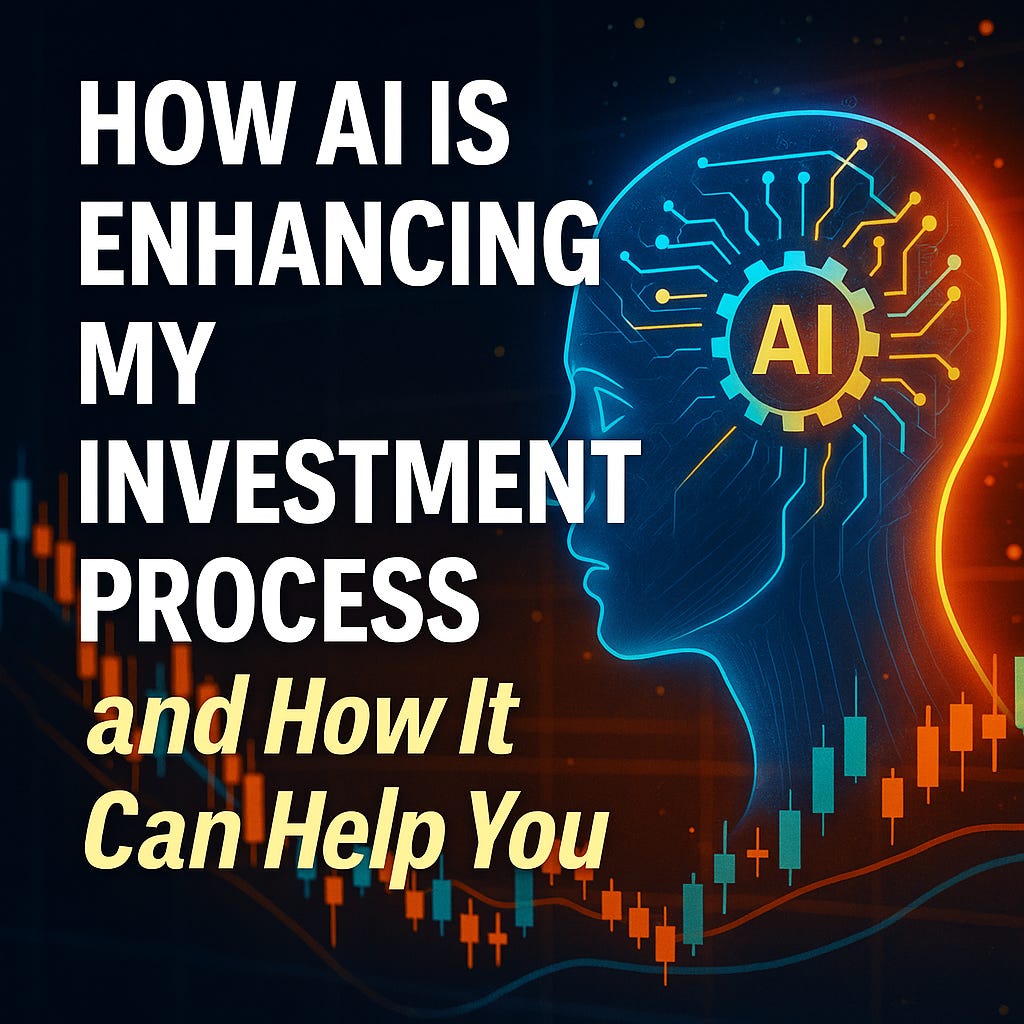How AI Is Enhancing My Investment Process— and How It Can Help You
Harnessing the power of AI for investing
The last few months I have been learning how to harness the power of AI for investing. The way I see it, there are two general categories of use cases:
Saving resources (e.g. time or money)
Performing tasks that humans either can’t do or that AI can do better than humans
Most of the use cases I’ve found so far fall into Category 1. Category 2 use cases may be the bigger prize, but they are much harder to identify. It’s also quite possible that they aren’t feasible yet—but with further advances in AI and Large Language Models (LLMs), they could become achievable.
In any case, I’ve already found several practical ways to integrate AI into my investment process, and I’d like to share them with you. Before we dive in, let’s go through some of the basics of how I think you should use LLMs for investing:
Use the right model(s) – there is a big difference between the new generation of reasoning models and the prior ones that are frequently the default option
For example: do not use ChatGPT 4o (what you get by default) but instead use ChatGPT o3
After testing various models with a range of prompts, I’ve found that Gemini 2.5 Pro with Deep Research currently performs best, closely followed by ChatGPT o3 with Deep Research. Of course, the best model will likely change over time, so it’s worth experimenting and using multiple models regularly.
If you want a great explanation of how LLMs work and how to use them by a former senior engineer at OpenAI, watch the How I Use LLMs by Andrej Karpathy video
Here are some of the use cases that I have found helpful so far. Your investment process might be different from mine, so while your specific uses might be different, my hope is that you find some useful ideas that you can use in your own investing. In the interest of brevity, I am including a few sample prompts below, however if you want all of the details prompts please feel free to read the recent presentation that I gave on this topic at a value investing conference.
Idea Generation – use AI to synthesize information to produce candidates
Sample Prompt: Act as a special situations securities analyst. Come up with a list of current and upcoming special situations, group them by category and briefly describe each. Include categories such as spin-offs, post-bankruptcies, corporate reorganizations, asset conversions, but do not limit yourself to those. In each case explain the timing of the key event
Company Overview – quickly learn about a company and its history
Company/Industry Deep Dive – have AI act as an analyst
Sample Prompt: Position Company X within their industry value chain. Are they capturing value from suppliers/customers, or being commoditized? How has their bargaining power evolved?
Framework Analysis – analyze a company through the lens of a specific framework
Sample Prompt: Conduct a full investment writeup on Company X using the framework of Philip Fisher's 15 Points
Look For Risks – summarize risks or find ones not mentioned
Thesis Checker – upload your investment report and have AI look for flaws
Sample Prompt: Summarize the investment case made in this report. Review the arguments presented and check for validity and logical flaws. What are the strongest arguments made? Which arguments were flawed and why? What arguments were missing if any? Make the strongest possible case for the opposite conclusion from that of the report using only the information/facts in the report itself.
Bear Case Advocate – have AI produce the “Devil’s Advocate” version of a report
Document Synthesizer – have AI analyze a lot of related documents for trends
Forensic Accountant – have AI look for indicators of aggressive accounting/fraud
Before wrapping up, I ran an interesting experiment. Since I originally prepared this presentation for investment professionals, I asked AI to anticipate what questions that audience might ask. Here are a few of the more insightful ones:
If everyone can license the same models, where does a defensible, sustainable edge come from?
Where has an LLM-driven workflow demonstrably improved portfolio results versus a traditional deep-fundamental process?
An AI synthesizes vast amounts of public data and existing analysis. How do you guard against it simply generating well-written, consensus opinions? Can this tool truly help uncover non-consensus ideas, or does it risk leading to more crowded trades as more investors use similar tools?
By outsourcing many foundational analytical tasks to an AI, what is the long-term risk of our own critical thinking and analytical skills—or those of junior analysts we're training—degrading over time? How do you manage the balance between tool and analyst?
You reference Philip Fisher, who championed the "scuttlebutt" method of talking to customers, competitors, and employees. An AI analyzes existing documents. How can it possibly replicate or substitute for the proprietary insights gained from this kind of primary, human-to-human research?
I don’t believe that AI is or is going to be a genie in a magic lamp that is going to tell you which stocks to buy tomorrow. However, I think that it can significantly improve our productivity and perhaps even allow us to take aspects of our investment process to the next level. While it’s unclear whether AI will provide a sustainable edge, not using it at all is increasingly likely to lead to a sustainable disadvantage.
My main goal in writing this is to share what I’ve learned and help you explore how AI might fit into your own investing. If you’ve discovered other interesting or effective ways to apply AI in investing, I’d love to hear about them—please drop me an email and share.
If you liked this article, please “like” and share this article. If you are interested in learning more about the investment process at Silver Ring Value Partners, you can request an Owner’s Manual here.
About the author
Gary Mishuris, CFA is the Managing Partner and Chief Investment Officer of Silver Ring Value Partners, an investment firm that seeks to apply its intrinsic value approach to safely compound capital over the long-term. He also teaches the Value Investing Seminar at the F.W. Olin Graduate School of Business.





